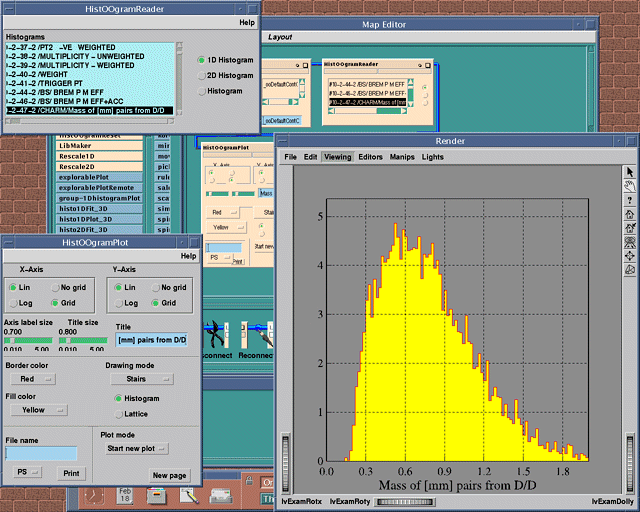
by Jamie Shiers, IT/ASD, CERN
CERN, the European Laboratory for Particle Physics (External), is home to some of the largest and most complicated scientific experiments in the world. Founded in 1954, the laboratory employs just under 3,000 people, whilst more than 6,500 scientists - over half the world's particle physicists - collaborate with CERN on experiments which explore what matter is made of, and the forces which hold it together.
The newest experiment at CERN is the Large Hadron Collider (LHC) (External). This has been under construction since 1994 in a circular tunnel - almost 9 km in diameter - which straddles the French-Swiss border near Geneva. When it is completed in 2005, it will be the largest particle accelerator in the world, with collision energies that will be close to 14 TeV. The LHC experiments are expected to provide new insights into the nature of the universe just after the so-called Big Bang.
The LHC is expected to be run for at least fifteen years, and will generate vast quantities of data - of the order of hundreds of petabytes (1017 bytes) - over this time. At CERN, we are currently developing LHC++ (External), a set of software tools for storing, archiving and analysing this vast quantity of data. Our strategy in this work is to use commercial solutions wherever possible, leaving us free to concentrate on implementing the parts of LHC++ which are specific to the High Energy Physics (HEP) arena.
We are using a number of software products from NAG within LHC++, including IRIS Explorer, NAG's visualisation and analysis toolkit, Open Inventor, the 3D object-oriented graphics library, and OpenGL, the de facto standard for 3D graphics. We have extended these in several ways; for example, we have developed HEP Inventor, a presentation graphics library which incorporates functionality for various types of one-dimensional plotting. In addition, we have built a number of IRIS Explorer modules (some of which make use of HEP Inventor) which are focused on interactive data analysis. Using these modules, CERN scientists have been able to interactively browse through collections of experimental data, analyse it, display the results of their analysis as a histogram plot, and print the plot or incorporate it into other publications.
NAG has been working closely with us to ensure that IRIS Explorer remains a useful part of LHC++. In particular, we were delighted when they announced (External) at the international conference on Computing in High Energy Physics (CHEP'98) in Chicago that they have begun to port IRIS Explorer to the Linux operating system. Linux is a popular platform in the HEP community, and the increased availability of IRIS Explorer will enable our colleagues to take advantage of the analysis tools in our LHC++ environment.

Using IRIS Explorer in LHC++ to analyse event data from one of the experiments at CERN. The first module in the map (partially obscured at top left in the map editor) is used to browse through collections of data (stored in a high-capacity database), while the second module reads specific events from the collection. The HistOOgramPlot module creates the plot of the data, which appears in the Render module window at bottom right. The HistOOgramPlot module also allows the user to write the plot out as a vector PostScript file, for printing or inclusion in other documents.

Analysing data from a two-dimensional histogram using IRIS Explorer in LHC++. The browser and reader modules from the example displayed in the figure opposite have been grouped together into a single module, and a new module, HistOOgram2Lat, has been added to convert the histogram to an IRIS Explorer lattice. This has the advantage that the standard IRIS Explorer visualisation modules can be used to display this data - for example, in the figure, the Graph3D module has generated the representation of the histogram, where each block has been coloured according to its height.